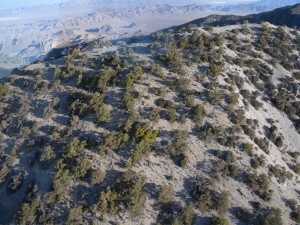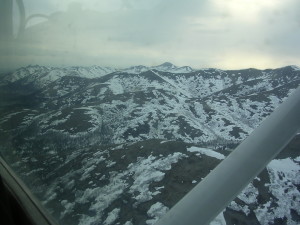
Drones. Literally the buzzword for many scientists in recent years looking to add flash to their C.V. or impress their administrative colleagues. Advances in battery technology, onboard software stability control, and inexpensive high-speed telemetry have created an exploding market for relatively-inexpensive versions of the ultimate remote-control Christmas present. There is a hitch, however. The technology is a little TOO good and the devices in ordinary civilian/hobbyist hands are a little TOO capable. To prevent total societal meltdown due to unfettered dronarchy, the government has seen fit to step in and decide how to regulate non-recreational use. The problem is, this is taking a while.
Once the F.A.A. and institutional policy-setters figure out how to let general science people play with these fascinating toys, you can bet that quite a few diverse research groups will be jumping on the bandwagon. Who in their right mind wants to show up at an AGU poster session and NOT be able to yak about how their field season went with their new flying gadget?
But how, exactly, are they going to be useful, especially for mountain science? What is it that a lightweight, remote, semi-automated aerial platform will do for you, other than produce admittedly stunning cinema-quality dynamic movie shots of your crew in the field? True, I would love to have some “Lord of the Rings“-style HD capture of myself and crew trekking along an epic ridgeline, but at some point the funding agencies are going to start asking how much it cost to produce those 5 immortal seconds of hero footage. Even if we got rave reviews.

Cheap remote sensing platform
For a lot of us landscape people, the first serious application idea is usually something like LiDAR (Light Radar, or, Light Detection and Ranging if you like) for high-resolution surface scanning. LiDAR flights over remote study areas by conventional aircraft are beyond the budget scope of all but the most cushioned projects. To ask for regular (i.e. weekly or daily) overpasses as part of, say, a snow hydrology or erosional activity investigation is the Holy Grail for some scientists. In mid-latitude regions such as the western United States, regular LiDAR surveys of snowpack would be highly beneficial for water planning at the single-reservoir scale.
Another fantastic item on the wish list would be regular surveys of vegetation and complex terrain with high-res thermal cameras. Mountain scientists are already using terrestrially-based thermal imaging to readjust our thinking in terms of how temperature is distributed in steep topography. There are a lot of questions being asked at all scales regarding this phenomena.
Issues with remote-sensing-style application of drones include obstacles such as cost-of-payload. Sure, tech will eventually get less expensive, but none-the-less a high-resolution thermal camera still costs tens of thousands of dollars, while LiDAR technology is still in the hundreds of thousands of dollars. Would you want to be the grad student that crashed a quarter-million-dollar payload? Not really. Still, it is likely that as these needs are made apparent that development of technology to meet the demand will occur.
Another problem with this application is that of course the times of observation are limited to good flying weather. Drones being rather small and easily tossed about, they are not going to be able to fly in all-weather scenarios, even if the payload is protected against rain or snow. Even today’s hobby drones are being shipped with incredible pre-programmed flight path capability, so it is possible that even during times of increased wind velocity a particular pattern could be followed without huge or dangerous deviation. The ultimate limitation here is going to be battery capacity and available flight time to deal with steady winds while traversing lots of elevation.
……continued in Part II
Do you currently operate drones? Do you see them as being useful to environmental science? Comment below!
